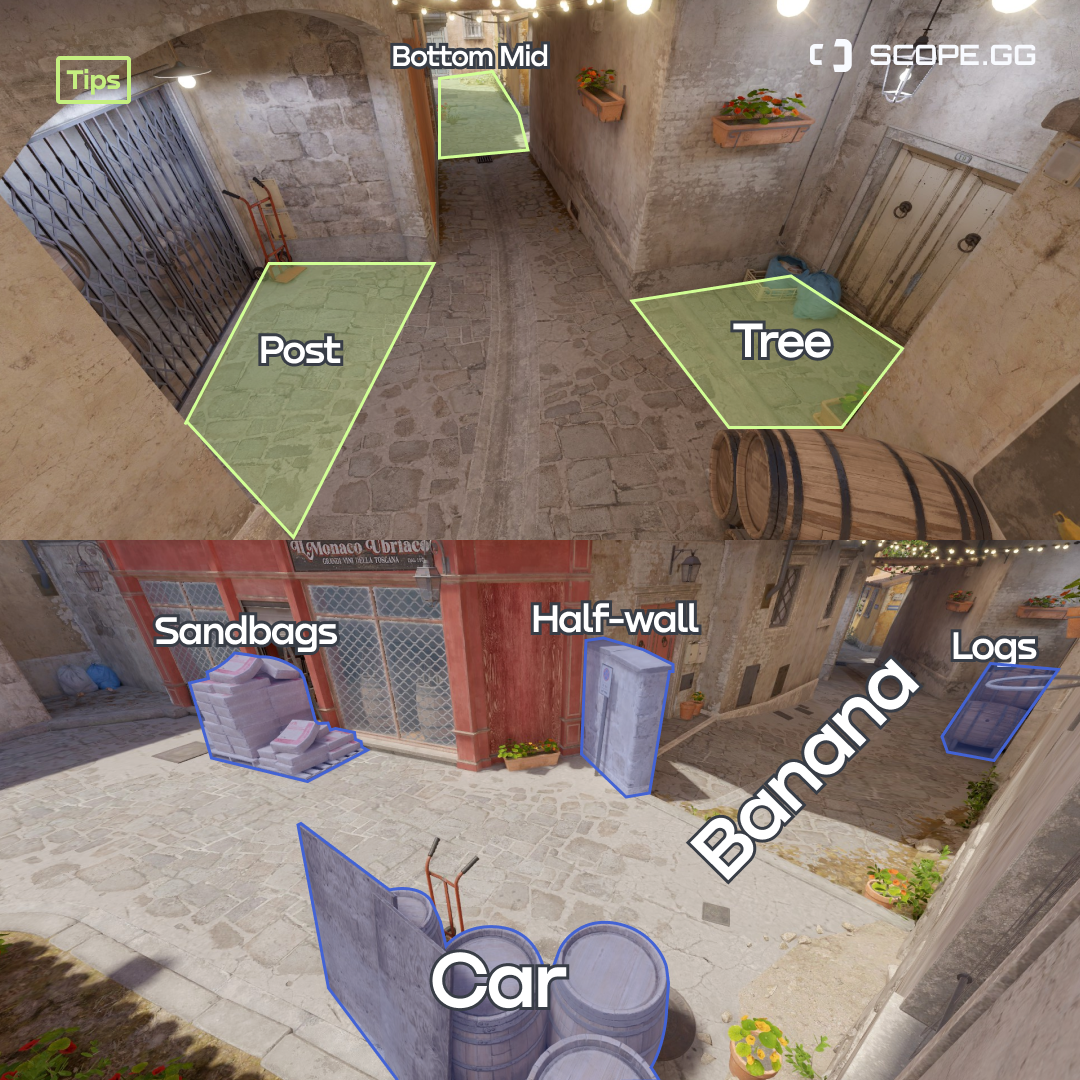Blggzz: Your Daily Dose of Insight
Stay updated with the latest news and informative articles.
Callout Conundrums: Decoding CSGO's Map Secrets
Unravel the mysteries of CSGO maps! Dive into clever callouts and tactics that give you the edge. Discover secrets to dominate the game!
Top 5 Hidden Strategies for Each CSGO Map
When it comes to CSGO, mastering each map is essential for gaining an edge over your opponents. Understanding the terrain, choke points, and common routes can greatly enhance your gameplay. Here are the Top 5 Hidden Strategies for each CSGO map that will elevate your game:
- Dust II: Utilize the double-stack boxes at A site to surprise enemies trying to push. Position yourself well and you can take them by surprise.
- Mirage: Play on the rooftops near mid to catch unsuspecting players crossing. This vantage point turns the tables in your favor.
- Inferno: Use smoke grenades in the banana area to obscure vision and push aggressively.
- Nuke: On the upper site, take advantage of the vents for quick escapes and surprise flanks.
- Overpass: Control the bathrooms to dominate mid and create pathways for strategic rotations.

Counter-Strike, often abbreviated as CS, is a highly popular first-person shooter game that pits teams of terrorists against counter-terrorists in various game modes. One aspect that players often discuss is the cs2 peekers advantage, which refers to the phenomenon where players who are moving into a sightline have an advantage over those who are holding the angle. This dynamic creates intense gameplay, requiring both strategy and quick reflexes.
How to Master Callouts in CSGO: A Comprehensive Guide
Mastering callouts in CSGO is crucial for effective communication between teammates during a match. Callouts refer to the specific names for locations on the map, which enable players to quickly and accurately share information about enemy positions and strategies. To get started, familiarize yourself with the most common maps, such as Dust II, Mirage, and Inferno. Each map has its own unique callouts, so it’s essential to research and learn these terms. A great way to do this is by watching professional gameplay, where you can hear how top players use callouts to enhance their team coordination.
Once you have a grasp of the basic callouts, practice using them in your own games. Start with a few simple terms and gradually incorporate more as you become comfortable. It can be helpful to create an ordered list of callouts for each map and upload it for easy access during gameplay. For example, you could structure your list as follows:
1. A Site - The bomb site on the A side of the map.
2. B Site - The bomb site on the B side of the map.
3. Mid - The center area of the map.
By consistently using these callouts, you’ll not only improve your own gameplay but also contribute to better team dynamics.
What Are Common Misconceptions About CSGO Map Layouts?
Counter-Strike: Global Offensive (CSGO) boasts a variety of maps, each with unique layouts that can significantly influence gameplay. One common misconception is that players believe all maps are inherently balanced. In reality, maps like Dust II and Nuke have different strategies and player dynamics due to their distinct layouts. For instance, Nuke features two vertically stacked bomb sites, emphasizing verticality and teamwork, while Dust II relies on long sightlines and chokepoints. Players often overlook how these layout differences can affect their gameplay strategies and team compositions.
Another prevalent myth is that a player can master a map layout simply by playing it repeatedly. While familiarity is crucial, understanding the intricacies of map layouts—such as rotate times, common engagement zones, and bomb site dynamics—is essential for strategic success. Players often fail to recognize the importance of map control and communication with teammates, which can make or break a game. Knowledge of the map’s nuances can lead to effective strategies that exploit enemy weaknesses, making map awareness a key element of competitive success in CSGO.